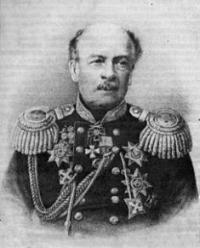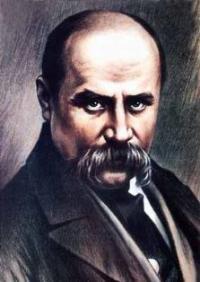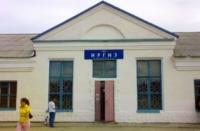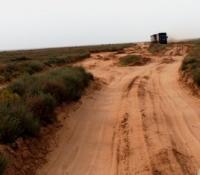You are here
History Irgiz and Chelkar.




Ancient history Aktobe of area.
“During the expedition in 1841 the one place has remained firmly in my memory it was the Zhar-Molla hill on the high right bank of the Irgiz river, and it was seen in the distance with its 4 or 5 high graves. I moved in the direction of this hill, crossing shoul-water of Irgiz I found Zhar-Molla (this place was situated in 400 versts of Orsk) and ordered to take photographs of it. Within the 2 days we explored all the neighboring in searching of more suitable place, but all efforts were without reason. The Irgiz stream was slow here. The river overflows its banks in Spring when snow is thawing; the right bank is very high and steep, and from the left bank we can see the boundless steppe. The soil of the Zhar-Molla hill is mixed (sand and clay with salt). On the shores of a large lakes, situated not far from the hill, I found out many rushes, which can be used as fuel and salt. Here were practically all things to found the fort and the locality”
Blaramberg I.F.
Tours Aktobe region.
The friendship between Kazakh and Ukrain peoples began in the remote past. One of the brightest events of it was the life of the great Ukrain poet Taras Shevchenko in kazakh land in the mid of XIX century. Also the great kazakh composer Kurmangazy came here and composed the famous kui “Adai”. It might be possible that Kurmangazy and Shevchenko had met each other. The English resident in Persia and Afganistan James Abbot visited 10 years ago before Shevchenko came here these places.
The kazakh hero Suiunkara Urgeshbayev with his sons and relatives arrested the English scout and handed him to Orenburg authorities. They thought that the scout came here with something in his mind. Shevchenko also visited Chelkar - is interesting with its monuments of the past. On November 11 in 1918 the kazakh revolutionary Alibi Dzhangildin also visited this town. The evidence of it is the memorial board on the Lenina Street.
The kazakh soviet composer and musician Akhmed Zhubanov had lived here. In the Sarybulak village of Chelkar district the overgrave monument dedicated to Eset Kotyrbayev and his son Daribai the gallant comrades-in-arms of Taimanov I.
The caravan way from Russia to Bukhara and Khiva used to pass here. The tsar dignitary Blaramberg I.F. wrote about fort Uralsk opening (1845) such: “During the expedition in 1841 the one place has remained firmly in my memory it was the Zhar-Molla hill on the high right bank of the Irgiz river, and it was seen in the distance with its 4 or 5 high graves. I moved in the direction of this hill, crossing shoul-water of Irgiz I found Zhar-Molla (this place was situated in 400 versts of Orsk) and ordered to take photographs of it.
Within the 2 days we explored all the neighboring in searching of more suitable place, but all efforts were without reason. The Irgiz stream was slow here. The river overflows its banks in Spring when snow is thawing; the right bank is very high and steep, and from the left bank we can see the boundless steppe. The soil of the Zhar-Molla hill is mixed (sand and clay with salt). On the shores of a large lakes, situated not far from the hill, I found out many rushes, which can be used as fuel and salt.
Here were practically all things to found the fort and the locality.” The fort was built on the bank of Irgiz within 4 - 5 weeks. On 10 August in the day of the St. Alexander the fort was solemnly opened, the priest made divine service, in the evening after all services here was given holiday dinner for the majority of people, the gifts were given and shot the fireworks. According to the Swedish traveler Sven Gedin Irgiz was the fortification, in this place there was a church, the population was about 1000 people including garrison, the garrison itself consisted of 150 people, 70 of whom were Orenburg kazakhs. The majority of the residents were the merchants.
In 1856 the first meteorological station in the territory of Kazakhstan was put in a work. In 1868 Irgiz got the status of the town. In January the famous kazakh enlightener Ibrai Altynsarin opened here the 4 - form Russian-Kazakh specialized school, and in 1887 the first specialized school for kazakh girls was opened on his initiative.
On the place of one of the bastion of former fortification there are now 4 schools such as: the general education school named after Altynsarin I., musical school, sport school and the secondary school. In the yard of the school named after Altynasarin remained the only building of the past century - the guardroom of gun-powder storehouse. Over hundreds years ago here was an important historical event for kazakh people.
Now in this place was built the memorial with marble board with the text in Kazakh and Russian languages: “ Here, on 10 October in 1731 the document about voluntary joining of Kazakhstan to Russia was signed.” This memorial was built in honor of 250 anniversary of this joining. Also the poet was amazed with Almat mausoleum. It is the intricate many cells building by its structure. This building has a dome and opened by low arch apertures in 5 neighboring cells, which also have domes.
There are burial vaults in all cells. The mausoleum’s outsides are decorated. The mausoleum was built in the mid of the last century. The mausoleum remains cult marks of bury of zoroastrizm. It is the sample of the kazakh architects skills and witnessed about their great creative possibilities. There are many modest overgrave buildings near the mausoleum. And one can see such monuments in the place Ush-Batyr.
Mooving further to Karabutak, then to the Karasai village where the Taldyk river flows. Besmola hill is in 25 km from Meni-Tobe. The sovkhoz named after Shevchenko is located in the district center. The ruins of this fortification lie on the high rock. One can see the remains of walls built of the red bricks, debris of glass and china dishes. There was also the settlement in 200m from fortification, the provement of which are the ruins of the houses.
The area near the fortification is sandy. In 1849 4 families of Orenburg kazaks settled here, and after a year 2 families left this place. The settlers used to be busy with agriculture, but all of their efforts were without reason. Many kazakh auls spent the winter around the Karabutak fortification, with a hope to be defended by Russians in case of Khivins capture. In summer they roamed to their Dzhailau.
By 1884 in Karabutak were 239 people including 177 soldiers of garrison. Here were 66 houses, 9 buildings and woody church. To the end of the century the population had increased. “There are 33 houses in this settlement; about 30 Russians, hundreds Tatars and some Kirgiz live here. The fort is headed by the commander, who has 84 soldiers.”- Sven Gedin wrote about Karabutak.
Authority:
«Monuments of the Central Asia». The author of M. Khahsimov. Publishing house, Saga, 2001






